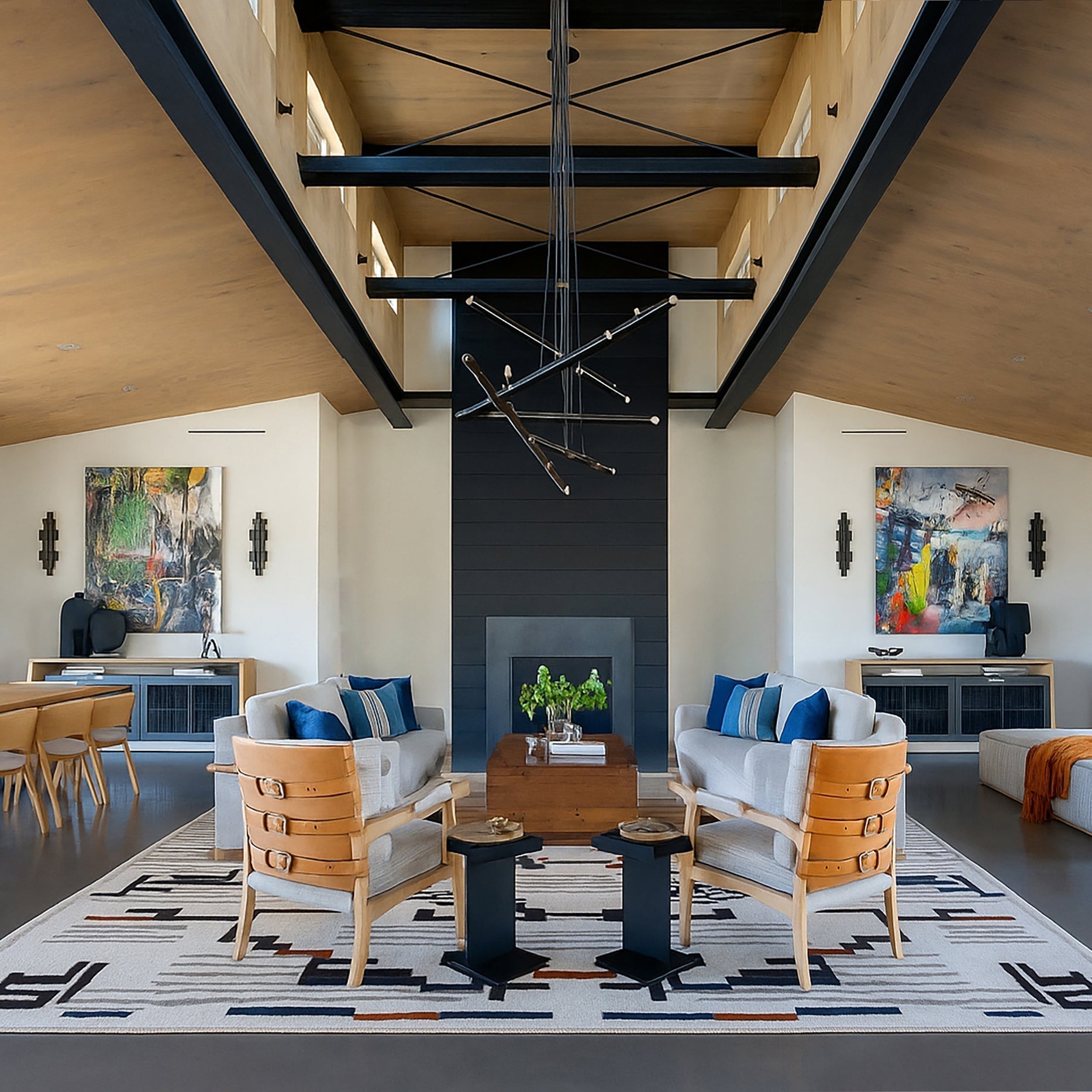
Countless San Francisco designers are busily working away on their proposals for the San Francisco Decorator Showcase, which are due today at noon. Next week we will hear who will be the few lucky ones who get redesign the fabulous mansion on 2950 Vallejo Street. Meanwhile Damion Matthews, publisher of SFLuxe, was most intrigued by the history of the house, and one previous resident in particular. Yesterday he published a fascinating article on SFLuxe, which describes the life of Princess Stephanie von Hohenlohe, née Stephany Julienne Richter. She was a Hungarian commoner of partial Jewish decent who after an affair with the son in law of Emperor Franz Joseph of Austria married the German prince Friedrich Franz von Hohenlohe-Waldenburg-Schillingsfürst and later became a confidante of Adolf Hitler. In 1939 she followed her lover Captain Fritz Wiedemann to San Francisco where he took the post of the German Consul, and for a couple of years they lived at 2950 Vallejo Street, along with the Consul’s wife and children. I already see the movie in my head. Who should play her? For all the juicy details read Damion’s article.


The part of the story captivated me in particular was that Adolf Hitler gave Princess Stephanie a palace in Salzburg after the Nazis had confiscated it from Max Reinhardt who was also of Jewish ancestry, and is best known as the founder of the world-renowned Salzburg Festivals. While Reinhardt was away in Hollywood the estate was turned over by Hermann Göring to Princess Stephanie who was given the assignment of transforming it into a guest house for prominent artists of the Reich, and to serve as a reception facility to Hitler’s Berghof home near Salzburg in Berchtesgaden, right across the German border in Bavaria. Thankfully the property was later returned to the Reinhardt estate.


Schloss Leopoldskron (Leopoldskron Palace) holds many wonderful memories for me and it is probably familiar to most Americans as one of the main locations for the 1965 film “The Sound of Music”. I admired it often from across the lake when walking my German Shephard Jascha, and I was always captivated by its graceful beauty. I was so proud that this small gem, small compared to other grand palaces in Vienna, graced the Austrian one thousand Schilling bill for the longest time, which was the highest denomination of Austrian currency before the Euro.



The charming Rococo palace also has an interesting history. Prince Archbishop Leopold Anton Eleutherius von Firmian (1679-1744) originally commissioned Leopoldskron, named after himself, in 1736 after enriching himself through expelling over 22,000 Protestants from Salzburg. He also built the Klessheim Palace to accommodate his family. Coincidentally that is the headquarters of the culinary and hotel management school I graduated from. To design his dream palace the prince archbishop hired architect Pater Bernard Stuart, a Scottish Benedictine monk from the St. Jakob monastery in Regensburg, Bavaria, and a Professor of Mathematics at Salzburg University. After the prince archbishop’s death Leopoldskron was passed on to his nephew Count Franz Laktanz von Firmian who was one of the early patrons of Leopold Mozart and his son Wolfgang Amadeus Mozart and a great connoisseur of art. In his life time he amassed a collection of over 749 paintings, 548 drawings, and 43 etchings, which included works by Albrecht Dürer, Titian, Rembrandt, Rubens and the count himself.











In 1837 Georg Zierer, the owner of a local shooting gallery, acquired Leopoldskron. He clearly had little taste and culture, and he stripped the palace of most of its interior decorations, selling the valuable collection of paintings and sculptures for 4 Gulden a piece, which was a negligible amount at the time. Even into the 20th century pieces from the Firmian estate could be found at at Salzburg’s flea markets. Until Max Reinhardt bought it in 1918 Leopoldskron had a number of different owners including a banker and two waiters who wanted to turn it into a hotel. But the most noted proprietor during that period was King Ludwig of Bavaria who lived there briefly around 1848.





Max Reinhardt invested large amounts of money to restore Leopoldskron to its original splendor and to accommodate stage productions and social events, such as the balls during the Salzburg Festivals. After the unfortunate Nazi ownership and its return to the Reinhardt estate, Max Reinhardt’s widow Helene Thimig offered it in 1946 to Clemens Heller, an Austrian student at Harvard University. While still a doctoral candidate at Harvard he got together with two other students and founded the “Marshall Plan of the Mind”, promoting intellectual exchange among Europeans and Americans to alleviate rifts created by World War II. Denied funds by Harvard University, but thanks to Helene Thimig, he eventually found a permanent home for the Salzburg Seminar, which was later transformed into a global forum. The Salzburg Global Seminar is an American non profit organization that holds symposiums on economics and politics for business future leaders from around the world.








In 1959 the organization purchased Leopoldskron and in 1973 the adjacent Meirhof, the farm which was part of the original Firmian estate. Thanks to the care of the Salzburg Global Seminar the palace has enjoyed continuous renovations and has been the venue for many splendid social gatherings for everyone to enjoy. From events to concerts and weddings, more than 270 years after its inception Schloss Leopoldskron still invites visitors from all over the world to experience the magic of my little palace from sweet princess childhood memories.


I am imagining what it looks like right now dusted in snow. Hmm, perhaps I should throw a party there next time I visit home. No, how about a Waltz ball? Anyone care to join me?
Cheers,





